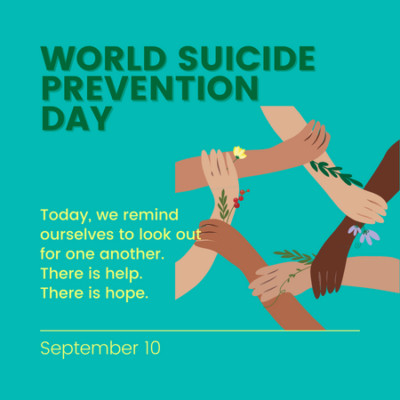Trigger warning: this article discusses sensitive topics related to self-harm, suicide, and other similar experiences. If you need to talk to someone or if you are in need of urgent help, please proceed to the nearest hospital emergency room, or proceed to the end of this article for the contact numbers of various local 24/7 crisis lines.
In We Thrive, our work is embedded with the assumption that life is inherently meaningful and worthwhile. In the process of learning to regulate, relate, and reflect, we also develop a sensitivity to at least three underlying intuitions about our lives: first, that it “make sense and has continuity”, and that the logic of life, while not always completely clear, eventually unfolds; second, that it is “directed and motivated by meaningful goals”, whether or not we have fully grasped these goals; and third, that it “matters to others” — saying not just that the outcomes of our life’s work has value, but that the presence of our life in and of itself is valuable (DeAngelis, 2018).
Sadly, this intuition of life’s purposefulness is not always immediately apparent nor secure. We can be met by challenges so intense that they disturb or even completely discredit it. For many, how life unfolds can lead to the perception that life simply may not be worth it, and can lead further to the conclusion that the only way out is to take one’s own life. And the great tragedy of human experience is that these conclusions are acted on too often. Among young people in particular, suicide is the fourth leading cause of death globally (WHO, 2023). And based on recent national studies, Filipinos are not exempted from this pain: as deeply worrying data from the Young Adult Fertility Survey 5 (YAFS5) has recently shown, 17% of young Filipinos reported suicidal ideation, 7% have attempted suicide, and more than half reported that they have not reached out to anyone about these experiences (UPPI, 2022).
To honor World Suicide Prevention Day on September 10, we wish to briefly discuss some facts about the nature of suicide, and to raise awareness about how we can effectively respond to this issue with greater wisdom and compassion.
First, let’s address some MISCONCEPTIONS about suicide:
- People with diagnosed mental health conditions are NOT the only ones who think about attempting, or try to attempt, suicide (Fuller, 2020). It is true that psychiatric illnesses such as depression, substance use disorders, and related conditions are found in a large number of cases (Brådvik, 2018). That said, estimates of people living with such conditions who actually attempt suicide quite low, with one study putting lifetime risk at just 4% (Bostwick and Pankratz, 2000). Even in the case of depression, the most commonly assumed cause in the popular imagination, “a large percentage of severely depressed patients never think about suicide” (Pompili, 2019). Non-psychiatric health problems (e.g. type 2 diabetes, see Gómez-Peralta et al., 2018), socioeconomic inequalities such as poverty (Bantjes et al., 2016) and immigrant status (Forte et al., 2018), or experiences of discrimination such as on the basis of sexual orientation and gender identity (Henry et al., 2021) are also well-known risk factors.
- Talking about suicide does NOT make someone more like to attempt suicide (Dye, 2022). This idea draws from a phenomenon commonly called “suicide contagion”: the uptick in cases after a report of suicide in mainstream media, such as of a celebrity figure; or in one’s immediate communities, such as of a friend (Poland, Lieberman, and Niznik, 2019). There is ongoing work towards reducing these risks, such as through evidence-based guidelines for responsible suicide reporting (Gould and Lake, 2013). But we know that simply talking to someone about it does not make it more likely that they will do it (Dazzi, Gribble, Wessely, and Fear, 2014). And the key word here is “responsible”: suicide contagion emerges when conversations about suicide are mishandled, such as excessive focus on the means of death, or failing to include accessible resources for seeking help (Utterson, Daoud, and Dutta, 2017).
- Thinking of, or attempting, suicide is NOT a sign of weakness or of moral failure (Sharma, 2021). One of the most difficult things about responding to suicide is that, while there is an abundance of knowledge about potential vulnerabilities, “no risk factor, including classification of diagnostic subtype, has been reliably shown to predict suicide” (Bostwick and Pankratz, 2000). So when we hear about suicide, what we are witnessing is an ultimately incomplete picture of a long and difficult journey, whose roads could have led to any other path, and whose particular tragic conclusion we can only ever speculate. To make assumptions about personal integrity, ulterior motive (e.g. seeking attention), or anything else about a person’s suicide assumes a level of understanding that we simply don’t have. If we want to be of any help, the first step would be to exercise some restraint on our own personal prejudices, so we can approach the question with more humility, curiosity, and kindness.
Misconceptions aside, the next question is about what we actually know can alert us to the risk of suicide. Of course, any such “warning signs” must be understood within a person’s context of adversity, and why they might experience such adversities as unbearable or insurmountable. Such contexts can be individual (e.g. a debilitating physical or mental conditions), relational (e.g. serious family conflicts), communal (e.g. unstable access to basic needs), or cultural and systemic (e.g. discriminatory attitudes towards particular groups) (CDC, 2022). Keeping these in mind, there are some potential warning signs which can alert us to such intense distress:
- Taking more interest in suicide than what would normally be expected (e.g. looking up information about different methods of ending one’s life), or making preparations as if one’s life will end (e.g. giving away prized possessions) (Sharma, 2021).
- Increased withdrawal or isolation from one’s significant relationships such as loved ones and other social groups (Dye, 2022).
- Increased statements which are self-deprecating (e.g. “I am useless”), express a serious sense of hopelessness (e.g. “There is just no way out”), and/or explicitly concern ending one’s life (e.g. “It would be better if I were gone”) (AFSP, 2023).
- Negative changes in one’s routines, such as reduced enthusiasm or commitment to hobbies or other interests; as well as disruption of regular bodily functions, such as eating habits, sleep, and hygiene practices (Ellis, 2019).
- Intense and unusual dysregulations in mood (e.g. increased agitation, lethargy, sadness) and accompanying shifts towards more dangerous and reckless behavior (e.g. substance use, violence, risky sexual activity, and self-harm) (Cleveland Clinic, 2021).
Lastly, whether you are someone whose loved one has attempted suicide, or perhaps you yourself live with thoughts of suicide, what is important is not just the apparent “causes”, but the “capacities” we have cultivating resilience in such difficult and complex situations. This can include ensuring access to urgent care after an attempted suicide (BeyondBlue.Org, 2022); creating a “safety plan” to help recognize triggers and coping techniques (Samaritans, 2023); and understanding the unique recovery process with the help of a professional (Raypole, 2019). Admittedly, this process of building resilience, with all its steps and caveats, can be confusing and overwhelming. But we can organize our approach within the framework commonly referred to as “suicide resilience”, described by five defining attributes (Wang, Lu, and Dong, 2022):
- Social support. Who can be trusted and turned to in times when life seems too much to handle, and when life seems to have no other reasonable options? Who can provide the necessary guidance, presence, and sense of security so that responding to life’s immense difficulties can be done with more efficacy, more compassion, and less crisis?
- Coping strategies. What can be done, as an individual and with others, that allows for building up the ability not just to more effectively tolerate distress, but also more effectively relish and take pleasure in life? What allows for more awareness of, and more compassionate responses to, the experiences that heighten the risk for suicide?
- Psychological capital. What resources are available, within oneself and within one’s many different roles and relationships, which can help grow one’s inner resources of optimism, hope, gratitude, and even forgiveness? Within one’s limitations, and doing the best one can given these harsh circumstances, how can wellbeing be strengthened?
- Meaning in life. One’s experiences can lead, with a terrible but clear logic, to the conclusion that suicide is the best solution. But what else might there be in the experience of life that might allow a person to seriously reconsider the possibility that living is also a viable option — not just viable, but even necessary, for pursuing one’s ideals, values, and goals? If one chose to live, what sense of purpose can encourage a person to persevere, and even joyfully accept, what life has to offer?
- Sense of responsibility. What obligations would a person leave behind, not just to loved ones but to themselves, if suicide is chosen? And is the person willing, given the things that are important to them, to give up on such obligations?
For mental health support services, email us at resilientteams@wethrivewellbeing.com or contact us to sign-up for sessions with our mental health clinicians.
If you need to talk to someone or if you are in need of urgent help, please proceed to the nearest hospital emergency room, or call these 24/7 crisis lines:
DOH-NCMH Hotline
0917-899-USAP (8727)
0966-351-4518
0908-639-2672
(02) 7-989-USAP (8727)
1553
Hopeline PH
0917-558-HOPE (4673)
0918-873-4673 (HOPE)
(02) 8-804-HOPE (4673)
2919
In Touch Crisis Line
0917-800-1123
0922-893-8944
(02) 8-8937603
References (in order of appearance)
- https://www.apa.org/monitor/2018/10/cover-search-meaning
- https://www.who.int/news-room/fact-sheets/detail/suicide
- https://www.uppi.upd.edu.ph/sites/default/files/pdf/YAFS5_National_Dissemination_Slides_FINAL.pdf
- https://www.nami.org/Blogs/NAMI-Blog/September-2020/5-Common-Myths-About-Suicide-Debunked
- https://www.ncbi.nlm.nih.gov/pmc/articles/PMC6165520/
- https://ajp.psychiatryonline.org/doi/10.1176/appi.ajp.157.12.1925
- https://www.ncbi.nlm.nih.gov/pmc/articles/PMC6025580/
- https://www.ncbi.nlm.nih.gov/pmc/articles/PMC5454768/
- https://www.ncbi.nlm.nih.gov/pmc/articles/PMC6068754/
- https://www.mdpi.com/2673-866X/1/3/13
- https://www.ncbi.nlm.nih.gov/pmc/articles/PMC6543655/
- https://heartlandhealth.org/2022/09/suicide-fact-vs-fiction/
- https://www.nasponline.org/publications/periodicals/communique/issues/volume-47-issue-5/suicide-contagion-and-clusters%E2%80%94part-1-what-school-psychologists-should-know
- https://www.ncbi.nlm.nih.gov/books/NBK207262/
- https://pubmed.ncbi.nlm.nih.gov/24998511/
- https://www.ncbi.nlm.nih.gov/pmc/articles/PMC5376723/
- https://www.mayoclinichealthsystem.org/hometown-health/speaking-of-health/8-common-myths-about-suicide
- https://www.cdc.gov/suicide/factors/index.html
- https://afsp.org/risk-factors-protective-factors-and-warning-signs/
- https://www.bridgestorecovery.com/blog/5-warning-signs-of-suicidal-behavior-that-are-easy-to-miss/
- https://my.clevelandclinic.org/health/articles/11352-recognizing-suicidal-behavior
- https://www.beyondblue.org.au/mental-health/suicide-prevention/after-a-suicide-attempt
- https://www.samaritans.org/how-we-can-help/if-youre-worried-about-someone-else/supporting-someone-suicidal-thoughts/creating-safety-plan/
- https://www.goodtherapy.org/blog/when-life-continues-recovering-from-suicide-attempt-0215197
- https://www.frontiersin.org/articles/10.3389/fpsyt.2022.984922/full




